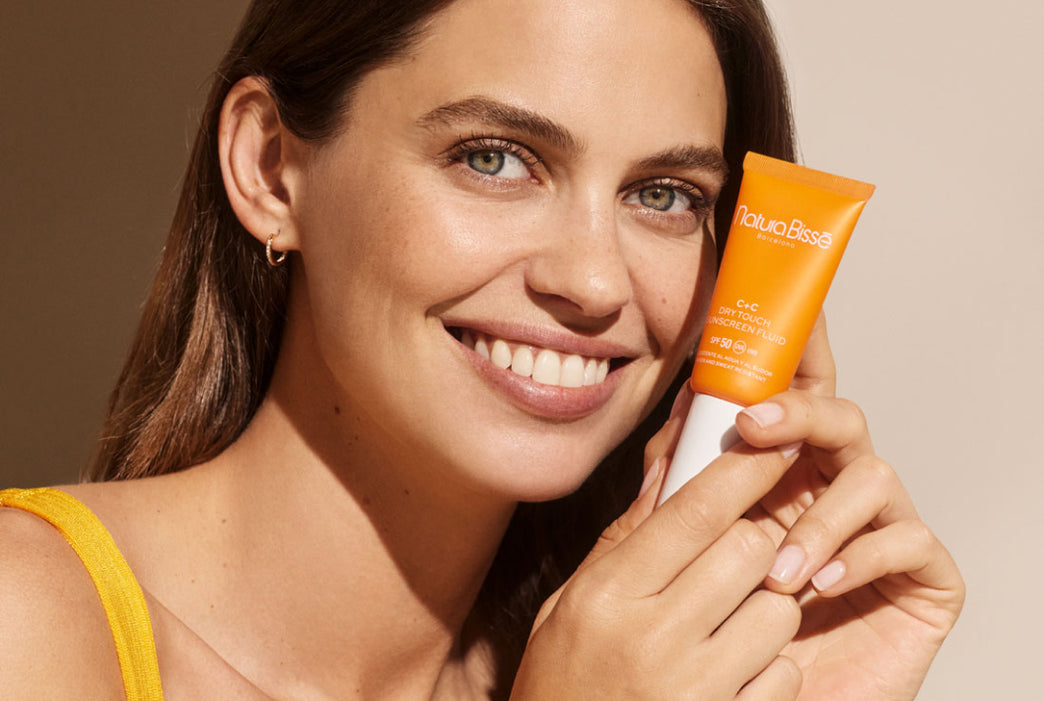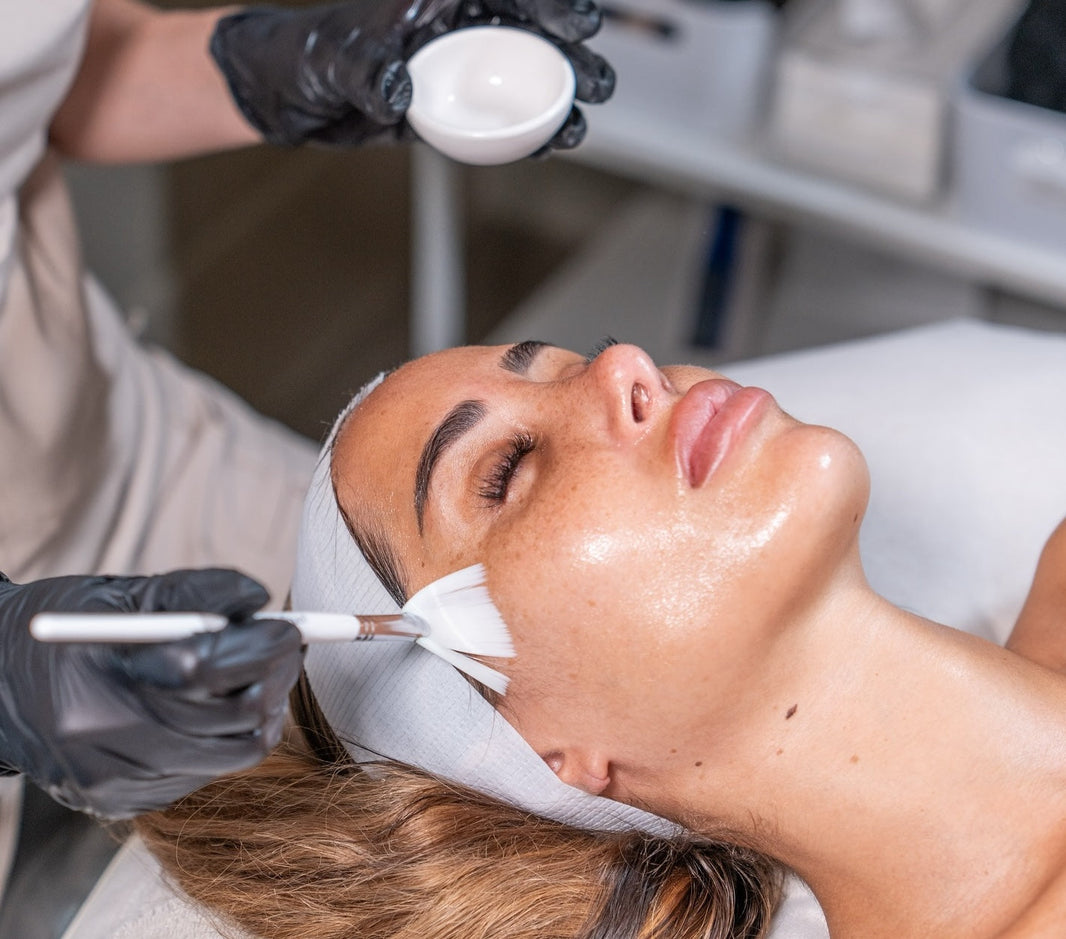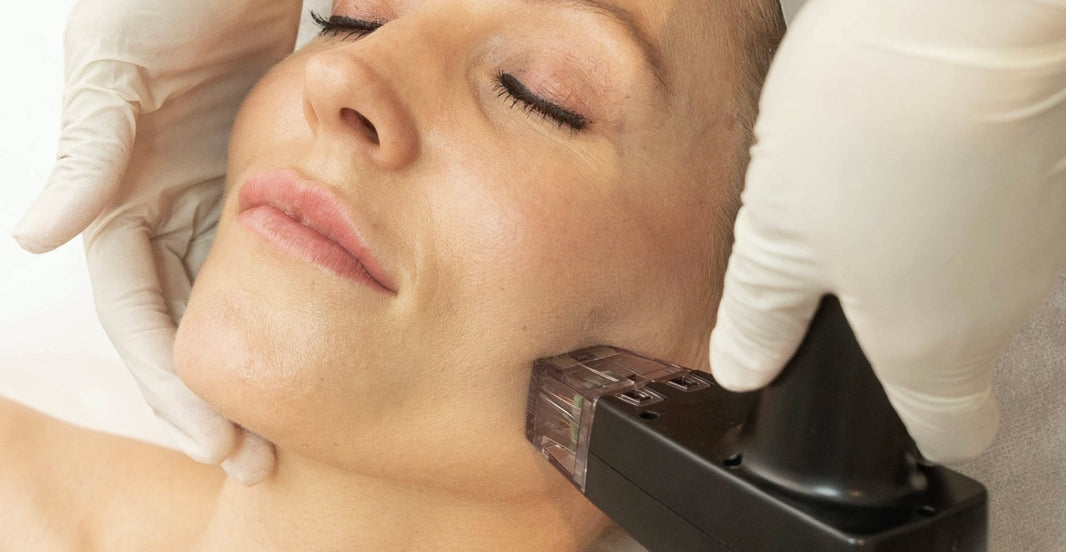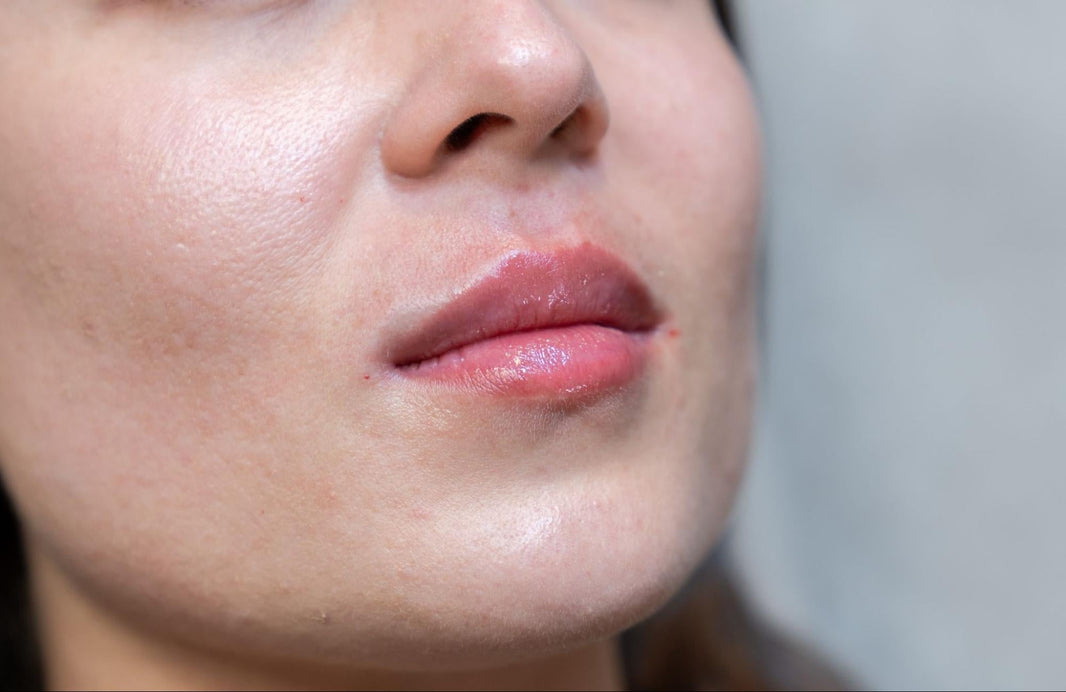A chemical peel is a skin treatment that helps improve texture and tone by removing the outer layers of skin. It involves applying a chemical solution that causes the skin to shed, revealing fresh, new skin underneath.
At BROWZ, we offer customised chemical peel treatments designed to encourage your skin to renew itself. The depth of the peel can vary, some target the surface for a mild refresh, while others go deeper to address more noticeable issues. Recovery time depends on the type of peel, but the goal is the same: to promote healthier-looking skin.
What Skin Conditions Can a Chemical Peel Treat
Chemical peels are used to improve various skin concerns, including:
-
Fine lines and wrinkles
-
Acne and acne scars
-
Uneven skin tone, dark spots, and melasma
-
Rough skin texture
-
Enlarged pores
-
Actinic keratosis (precancerous skin condition)
What Are the Different Types of Chemical Peels
Chemical peels have different strengths, each designed to address specific skin concerns.
a. Superficial (Light) Peels
Superficial peels use mild acids, such as glycolic or salicylic acid, to target only the outermost layer of skin. They help improve minor blemishes, dullness, and slight discolouration. Because they work on the surface, they involve little to no downtime.
The skin may look slightly red afterward, but recovery is quick, usually within a few days. These peels are often done as part of a regular skincare routine to maintain a fresh and even complexion.
b. Medium Peels
Medium peels use stronger acids, like trichloroacetic acid (TCA), to reach deeper layers of the skin. They are effective for treating acne scars, pigmentation issues, and moderate wrinkles. Since they go beyond the surface, the skin takes longer to heal.
Peeling and redness are common during recovery, which usually lasts about a week. These peels provide more noticeable improvements than superficial peels but require more aftercare.
c. Deep Peels
Deep peels use phenol or high-strength TCA to penetrate multiple layers of skin. They are used to treat deep wrinkles, severe sun damage, and long-term scarring. Because they work at a deeper level, recovery takes longer, often several weeks.
The skin will peel significantly, and redness can last for a while. Deep peels require medical supervision and careful aftercare to ensure proper healing. Due to their intensity, they are usually a one-time treatment rather than part of a regular skincare routine.
What Are the Benefits of Chemical Peels
Chemical peels are a widely used skin treatment with several medical advantages. They offer a controlled way to improve skin health, making them a practical option for many people.
-
Customisable treatment
Chemical peels have different strengths, allowing for a personalised approach based on skin type and condition.
-
Deeper exfoliation than regular facials
Unlike standard facials, chemical peels remove layers of dead skin rather than just cleansing the surface.
-
Non-invasive with controlled effects
The treatment does not require incisions or injections, and the depth of the peel can be adjusted for desired results.
-
Can be performed in a clinical setting
No need for hospital visits; most chemical peels are done in an aesthetic clinic. It’s important to choose a reputable clinic for safe, effective treatment.
-
Predictable and gradual process
The peeling and healing process follows a known timeline, making it easier to plan around.
-
Can be repeated if needed
Lighter peels can be done regularly to maintain results, while deeper peels offer long-term benefits in a single session.
-
Suitable for different skin concerns
Can address a range of issues, from pigmentation to rough texture, without requiring multiple types of treatments.
-
Minimal equipment required
Does not involve lasers, needles, or complex machinery, making it a straightforward procedure.
-
Widely researched and practised
Chemical peels have been used in dermatology for decades, with well-documented methods and results.
Who Should and Shouldn’t Get a Chemical Peel
Chemical peels can be a suitable option for many people, but they are not recommended for everyone. Factors such as skin type, medical history, and current skin conditions should be considered before undergoing treatment.
Ideal candidates for a chemical peel:
-
People with mild to moderate skin concerns.
-
Those looking for non-invasive skin rejuvenation.
-
Individuals with realistic expectations.
Not recommended for chemical peel:
-
People with active infections, open wounds, or sensitive skin conditions.
-
Those prone to keloid scars.
-
Pregnant or breastfeeding women (for certain peels).
-
Individuals on strong acne medications (e.g., isotretinoin).
How to Prepare for a Chemical Peel
Proper preparation before a chemical peel helps ensure a smooth procedure and better results. It also reduces the risk of side effects and complications. A dermatologist will provide specific instructions based on your skin type and the type of peel you are getting.
1. Consultation and Skin Assessment
-
A dermatologist or skincare professional will assess your skin for the most suitable peel.
-
Your medical history, skin concerns, and treatment goals will be discussed to minimise risks.
-
A patch test may be performed, especially if you have sensitive skin or a history of allergic reactions.
-
If you have darker skin, additional precautions may be recommended to reduce the risk of pigmentation changes.
2. Pre-Treatment Skincare Routine
-
Avoid using retinoids, strong exfoliants, and harsh skincare products at least one week before the procedure to prevent irritation.
-
Keep the skin hydrated with a gentle moisturiser as advised by your dermatologist.
-
Avoid facial treatments such as waxing, laser hair removal, or microdermabrasion for at least one week before the peel.
-
If recommended, use a mild cleanser and avoid scrubbing the skin.
3. Sun Protection
-
Avoid excessive sun exposure for at least two weeks before the treatment to prevent skin sensitivity.
-
Apply a broad-spectrum sunscreen with SPF 30 or higher daily, even if you are indoors.
-
Wear a hat or seek shade outdoors to protect your skin from UV damage.
-
If your skin is sunburnt, the procedure may need to be rescheduled to prevent complications.
4. Medications and Health Considerations
-
If you have a history of cold sores, an antiviral medication may be prescribed to prevent flare-ups.
-
Some skin-lightening creams, like hydroquinone, may be recommended to reduce the risk of post-treatment pigmentation issues.
-
Avoid blood-thinning medications, such as aspirin or ibuprofen, unless instructed otherwise by your doctor.
-
Inform your dermatologist about any medications you are taking, especially acne treatments like isotretinoin, which may affect healing.
What to Expect During and After a Chemical Peel Procedure
A chemical peel is a straightforward treatment that follows a structured process. Understanding what happens during the procedure can help you feel more prepared and at ease.
The Chemical Peel Procedure
1. Pre-Treatment Cleansing
Before the peel is applied, the skin is thoroughly cleansed to remove any dirt, oil, or makeup. This step ensures the chemical solution can work effectively and evenly. Depending on the type of peel, a prepping solution may also be used to remove excess oils and balance the skin’s pH. If the peel is being applied near the eyes or lips, protective coverings may be placed to prevent irritation.
2. Application of the Peel
Once the skin is clean, the chemical solution is carefully applied using a brush, cotton pad, or gauze. The type of solution used depends on the depth of the peel, with lighter peels containing milder acids and deeper peels using stronger formulations. The solution is spread evenly over the treatment area and left on for a set amount of time to allow it to penetrate the skin.
3. Sensation During the Peel
As the chemical solution works, you may feel a mild tingling, warmth, or stinging sensation. This is a normal reaction as the acids begin to break down the outer layers of the skin. The intensity of the sensation varies depending on the depth of the peel, lighter peels usually cause minimal discomfort, while medium and deep peels may feel stronger. A fan or cool compress may be used to help ease any discomfort during the procedure.
4. Neutralisation or Self-Neutralisation
For some chemical peels, a neutralising solution is applied to stop the chemical reaction and restore the skin’s balance. Other types of peels are self-neutralising, meaning they continue to work until they are washed off after a certain period. Your skincare professional will give you specific instructions on when and how to cleanse your skin if neutralisation is required later. Once the peel is complete, a soothing moisturiser and sunscreen may be applied to protect the skin.
Recovery Timeline of Chemical Peel Treatment
-
Superficial Peel Recovery: Mild redness and slight flaking for 1-3 days.
-
Medium Peel Recovery: Peeling, redness, and sensitivity for 5-7 days.
-
Deep Peel Recovery: Significant peeling and redness with a 2-4 week recovery time.

General Aftercare and Maintenance Tips
Getting a chemical peel is just the first step, maintaining the results requires proper skincare and healthy habits. Following a consistent routine helps extend the benefits of the treatment and keeps the skin looking fresh.
Follow a Gentle Skincare Routine
After a peel, the skin is more sensitive, so using mild, fragrance-free skincare products, including cleansers and moisturisers, is essential. Harsh exfoliants and active ingredients like retinoids or acids should be avoided until the skin has fully healed.
Keep the Skin Hydrated
Moisturising regularly helps prevent dryness and irritation. A hydrating serum or lightweight moisturiser with soothing ingredients can support the healing process and maintain a smooth texture.
Prioritise Sun Protection
Newly treated skin is more vulnerable to sun damage, so use daily sunscreen with SPF 50. Wearing a hat and avoiding direct sun exposure can further reduce the risk of pigmentation changes.
Avoid Picking or Scrubbing the Skin
As the skin heals, it may flake or peel, but picking at it can lead to scarring or uneven texture. Letting the skin shed naturally ensures a smoother and more even result.
Schedule Maintenance Treatments
For long-term improvements, some people benefit from periodic chemical peels or complementary treatments like hydrating facials or gentle exfoliation. A skincare professional can recommend a treatment plan based on individual skin needs.
Potential Risks of Chemical Peels
Chemical peels are generally safe when performed by a qualified professional, but like any skin treatment, they carry some risks. Temporary redness, peeling, and mild irritation are common as the skin heals. In some cases, changes in skin colour may occur, such as hyperpigmentation (dark spots) or hypopigmentation (light spots), especially in people with darker skin tones. These effects are usually temporary and can be minimised by following aftercare instructions and avoiding sun exposure.
More serious complications, such as scarring or infection, are rare but possible, particularly with deeper peels. Choosing a trained professional and following their guidance significantly reduces these risks. With proper preparation and aftercare, most people experience smooth healing and positive results, making chemical peels a well-tolerated and effective option for skin improvement.
Final Thoughts on Chemical Peels
Chemical peels are a reliable and well-established treatment for improving skin texture, tone, and overall appearance. With different peel strengths available, they can be tailored to suit a range of skin types and concerns, from mild discolouration and roughness to deeper wrinkles and scarring. When carried out by a qualified professional and supported with proper preparation and aftercare, the procedure is generally safe and effective.
If you're considering this treatment, speak with a dermatologist to find out which type of peel is most appropriate for your skin goals. With the right approach, chemical peels can become a valuable part of your long-term skincare routine.
Frequently Asked Questions
Is chemical peeling good for the skin?
Yes, when performed by a professional, chemical peels help remove dead skin cells, improve skin texture, and promote new cell growth.
How long do the effects of a chemical peel last?
The results depend on the type of peel. A superficial peel lasts a few weeks, a medium peel can last several months, and a deep peel provides long-term results but requires longer recovery.
How much does a chemical peel cost in Dubai?
The price varies based on the clinic, type of peel, and the number of sessions. On average, it ranges from AED 300 to AED 2,500 per session. Deep peels are more expensive due to their intensity and medical supervision requirements.
What are the risks of a chemical peel?
Possible risks include redness, peeling, and temporary skin sensitivity, which are normal parts of the healing process. Side effects like hyperpigmentation, scarring, or infection are rare, especially when professional and aftercare instructions are followed correctly.
Can I go outside after a chemical peel?
It is best to avoid direct sun exposure for at least a few days after treatment. Sunscreen is essential to protect the skin and prevent pigmentation issues.
Related Articles
Cart
Don't miss out on the best deals!
Your cart may be empty now, but let us help you fill it up with amazing products.
- Choosing a selection results in a full page refresh.



 hristmas
hristmas



